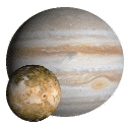Celestia's free stargazing software includes both small cosmic objects and entire galaxies. In fact, it is a home planetarium, thanks to which you can visit the most remote corners of our universe. It is worth noting that Celestia is used as a NASA educational program.
Celestia allows you to learn complete information about almost 120 thousand stars and other cosmic objects. With one click of the mouse you can determine the distance to the object of interest, its data and temperature. When you put the cursor on a particular planet, its geographical name is displayed. The program provides for displaying the boundaries of constellations. In outer space you can move with any given speed, and having set it, you can see after a while how far you have moved.
You can take screenshots and record videos. Celestia makes simply mesmerizing videos that you and your loved ones will love. However, for unknown reasons, not all space objects are included in Celestia's database. Some nebulae, quasars, and black holes are missing.
Due to the fact that there is a certain lack of information about the trajectory of double stars, they are also not all included in the program. In addition, not all stars are mapped in space, in particular, those located at a distance greater than a few thousand light years, do not have complete descriptive information.
The graphics of the program are of a high level, which allows you to fully immerse yourself in the study of the vastness of the universe.


Add comment